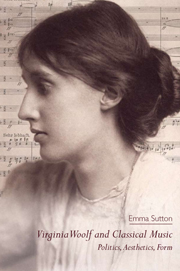4 - Fugues, Flights and Free Association
Published online by Cambridge University Press: 05 April 2014
Summary
Loving Bach: shell shock and hysterical fugue
She said she loved Bach. So did Hutton. That was the bond between them, and Hutton (a very bad poet) always felt that Mrs Dalloway was far the best of the great ladies who took an interest in art. It was odd how strict she was. About music she was purely impersonal. She was rather a prig. But how charming to look at! She made her house so nice, if it weren't for her Professors. Clarissa had half a mind to snatch him off and set him down at the piano in the back room. For he played divinely.
(MD, 150)This unobtrusive conversation from the final section of Mrs Dalloway takes place at the party, the event that concludes the day the novel traces. As the enthusiasm of hostess and guest suggests, Bach's fugues – the objects, as Grove puts it, of ‘almost universal esteem’ since at least the early nineteenth century – were enjoying a renewed vogue in the 1920s, partly due to the rise of musical neo-classicism. Allusions to Bach are scattered throughout Woolf's letters and diaries of this period, and she attended several concerts at the Bach Festival in 1920 before starting work on the texts that became this novel; the Woolfs' record collection eventually included eighty recordings of Bach's music.
- Type
- Chapter
- Information
- Virginia Woolf and Classical MusicPolitics, Aesthetics, Form, pp. 90 - 112Publisher: Edinburgh University PressPrint publication year: 2013



